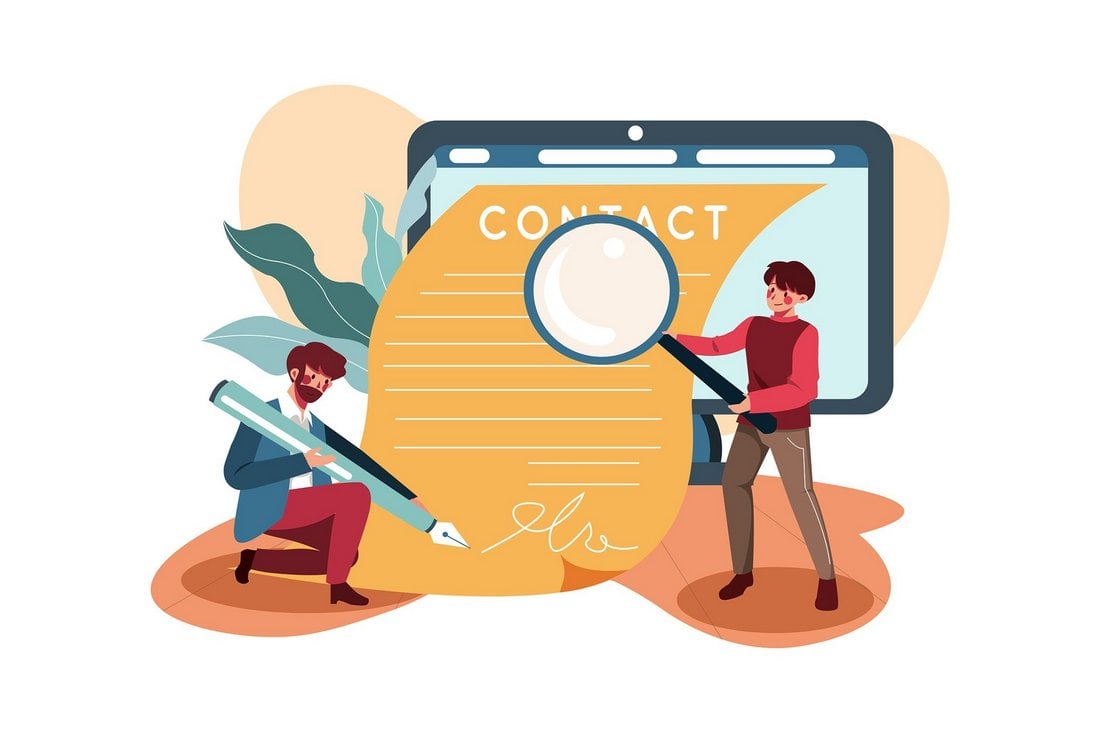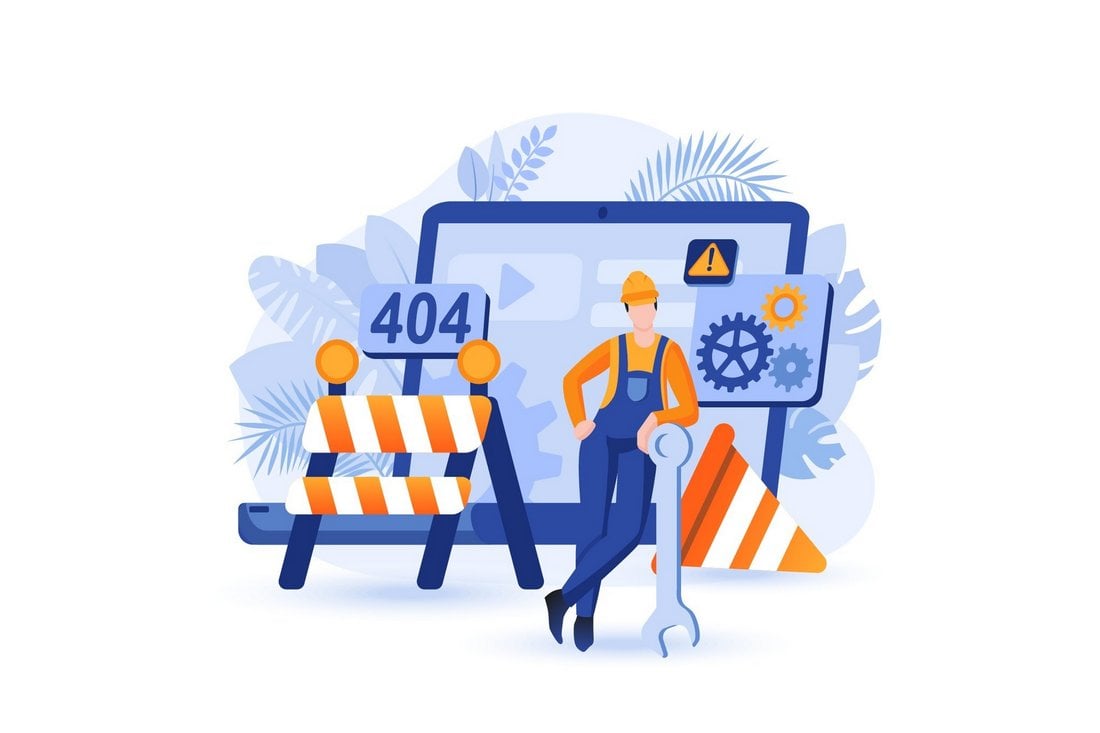10+ Classic Freelance Designer Mistakes to Always Avoid
Freelancing is a lot like managing your own business. With every client, you learn something new, and learning from mistakes is also part of that process.
However, there are some mistakes that you should always avoid at all costs. In this post, we look at some of those classic freelance designer mistakes that even the most experienced freelancers make and how to avoid them.
As they say, learning from mistakes is part of every job. But learning from other people’s mistakes is an even better way to avoid trouble. So, take note and see if you’ve made any of these mistakes in your career.
1. Skipping Contracts

Some clients will ask you to sign a contract right from the beginning. These can be NDAs (Non-Disclosure Agreements) or even service contracts. This is a sign of a good client who values professionalism. Just make sure to read these contracts thoroughly or have a lawyer look at them before signing.
However, most design clients you work with won’t ask you to sign a contract. That doesn’t mean they are unprofessional. It’s because they think it’s unnecessary for smaller projects and gigs. But they are wrong!
Even the smallest freelance gig should start with a good contract, it’s the only way you can protect yourself from clients who skip payments or overwork you beyond the scope of the project. So, when a client doesn’t send you a contract, it’s your responsibility to ask them to sign one.
It’s also worth noting that your email conversations with the client are legally binding. If it’s a short or one-off gig, getting all the facts, requirements, and payment terms explained in an email should be enough to protect yourself. But signing a detailed contract document is the best approach.
2. Not Having a Clear Project Scope
Most of the design clients that approach you won’t have a clear idea of how much work and skill is required to complete a project. And it’s up to you to explain it in detail to them. That’s where the project scope or design brief comes in.
With a clear project scope, you can showcase all the tasks, deliverables, goals, costs, and other important parts of the project in simple terms so that the client understands all the requirements of the project.
Project scope also allows you to ensure you get enough time to complete the project as well as to avoid scope creep.
3. Ignoring Client Red Flags
We get it, when you’re having a rough month without any sign of a client, you will often rush to accept the first client you get a response from. However, even during those tough times, you should take all the precautions to identify the red flags to avoid bad clients.
Most bad clients will often give you subtle telltale signs. Like when they constantly lowball your price, disregard your contracts, ignore important questions you ask, or even ask for free samples.
When you desperately need to pay your bills, you’ll ignore these red flags. But they will only lead to more trouble and conflicts in the future. So think twice before taking on these types of clients.
4. Poor Communication Skills

Clients can recognize unprofessional freelancers from a mile away, especially from the way you talk and write emails. When you address your client as “bro” or “mate”, you are setting yourself up for rejection.
Good communication skill is the key to building good relationships with clients. It’s important to treat your clients with respect and gratitude, rather than being overconfident or showing your ego in your conversations.
Your true self will often show when a client gives feedback and criticism on your work. Learn to handle these situations like a pro and you’ll have a successful career.
5. Forgetting to Set Boundaries
If a client keeps coming back to you with more and more requests, additional tasks, and endless revisions, you know you’ve made a mistake. That’s the result of a lack of boundaries.
Setting boundaries with your client is just as important as your freelance contract. You should always outline your work ethic and include some boundaries in your contract or initial agreement.
For example, let your client know how many revisions they are entitled to, how much they have to pay for extra revisions, or even explain the hours you’re available for work.
6. Pricing Too Low
If you’re still charging the same rate you asked for five years ago for your services, you’re missing out. Clients will always come at you with a lowball offer trying to get a discount but that doesn’t mean you need to stick to the same old price.
Oftentimes, asking for a lower price can also be a mistake because the clients who are used to working with professionals will see it as a red flag.
It’s also a good idea to revise your prices every couple of years. It’s perfectly okay to raise your rates as you accumulate more experience, new skills, and knowledge. And let’s not forget inflation and taxes.
7. Missing Deadlines

Missing deadlines and always being late to deliver is one of the biggest mistakes you can make as a beginning freelancer and if not managed you will not succeed as a freelance designer.
While it’s okay to miss a deadline once or twice, you should not let it become a habit. It will not only lose your client’s trust but it will also affect your workflow and schedule.
If you feel like you need more time to deliver a project, it’s best to ask your client for an extension on the deadline beforehand. And in the future, plan your schedule well to ask for more time and deliver early, rather than the other way around.
8. Failing to Specialize
“A jack of all trades is a master of none, but oftentimes better than a master of one”, this quote by William Shakespeare has a deep meaning. While you should always try to specialize in at least one skill, you should not limit your capabilities to that skill alone.
Whenever you need medical advice, you go to a specialist doctor. Or when you need some work done to a specific part of your car, you go to a mechanic that specializes in that area.
The same applies to freelance designers. You should try to specialize in a skill that outperforms all the other “jack of all trades” types of designers. But you should also learn other skills related to your main specialization to make yourself indispensable.
9. Not Learning New Skills

Not learning new skills is just as big of a mistake as failing to specialize in your skills. Just because you are getting more work doesn’t mean you can stop learning.
For example, there are now far more advanced tools available that allow you to cut the time of your work in half as well as automate the most repetitive tasks.
Ignoring these new technologies and thinking you have it all figured out will only put you at a disadvantage. Before long, you will be replaced with another freelancer who take advantage of new skills and tools.
10. Ignoring New Trends
Graphic design is a constantly changing industry. New trends, concepts, and technologies are introduced almost every day. As a professional, it’s important to stay on top of these new design trends and not ignore them.
Especially in the past few months, there have been rapid advancements in AI tools that help create art, illustrations, and designs. It’s crucial to find a way to incorporate these tools and technologies into your workflow to stay relevant as a freelance designer.
11. Not Updating the Portfolio

With all the work and a busy schedule, it’s easy to forget about maintaining your graphic design portfolio. But don’t forget that your portfolio is the key component in every proposal you send to a client. And it’s also the way clients can discover your work.
So, set aside a few minutes each week or even once a month to update your portfolio. Make sure to showcase your best projects, clients, and designs with details to win over new clients.
12. Using Outdated Software
Imagine having to work on a project that requires Figma when the only software you use is Photoshop CS3. Using old and outdated software is a huge problem among freelance designers and it needs to stop.
Yes, new software can be expensive these days but don’t forget that your entire career depends on these software as well. Besides, there are now far better alternatives to Photoshop and other expensive software that you can use as well.
In Conclusion
No one is perfect and things won’t go perfectly with every client you work with. If you ask any successful freelancer, they will list dozens of mistakes they’ve made in the past. That’s part of being a freelancer.
Hopefully, with the help of this list, you’ll be able to avoid some of the most common mistakes almost every freelance designer tends to make.